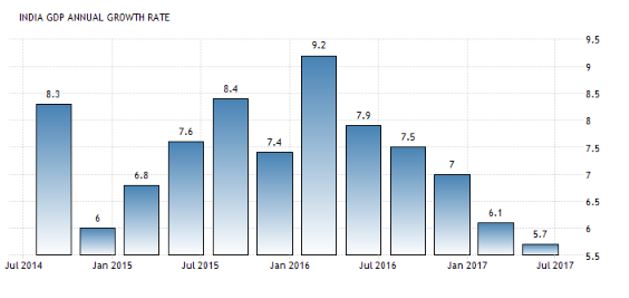Moody’s recently upgraded India’s sovereign debt rating for the first time since 2004, overlooking many economic problems due to poorly implemented economic policies. Some investors were likely surprised by the upgrade since this year India surrendered its status as the world’s fastest-growing major economy.
The Indian government recently introduced some major new policies designed to position the economy for stronger, long-run growth. The two structural policy changes were both momentous – the demonetization of high-value currency notes in November of 2016 and the introduction of a goods and services tax (GST) in July of this year.
Neither policies were introduced either smoothly or effectively. The demonetization, which forced a large note ban, was intended to curb illegal activities and to increase the public’s reliance on the banking system. The demonetization program which started a year ago initially removed 86% of India’s currency in circulation.
The introduction of the GST was probably India’s most comprehensive and revolutionary tax reform. However, the GST was introduced in a baffling way, and at the start there were some significant differences in the tax rates imposed on different goods and services.
Not surprisingly, the new GST resulted in a temporary inflationary bump – which was also the case in Canada when it introduced its own GST.
The net result of all of this can be seen in the sharp slowing of India’s economy from 7.2% growth in 2015 and 2016 to 6.7% in the first quarter of 2017 and 5.7%in the second.
As well, India’s economy has lagged behind China’s for the second quarter in a row. (China recorded a 6.9% annual growth rates in both the first and the second quarter of 2017.)
India’s Annual Real GDP Growth Rate















Leave A Comment